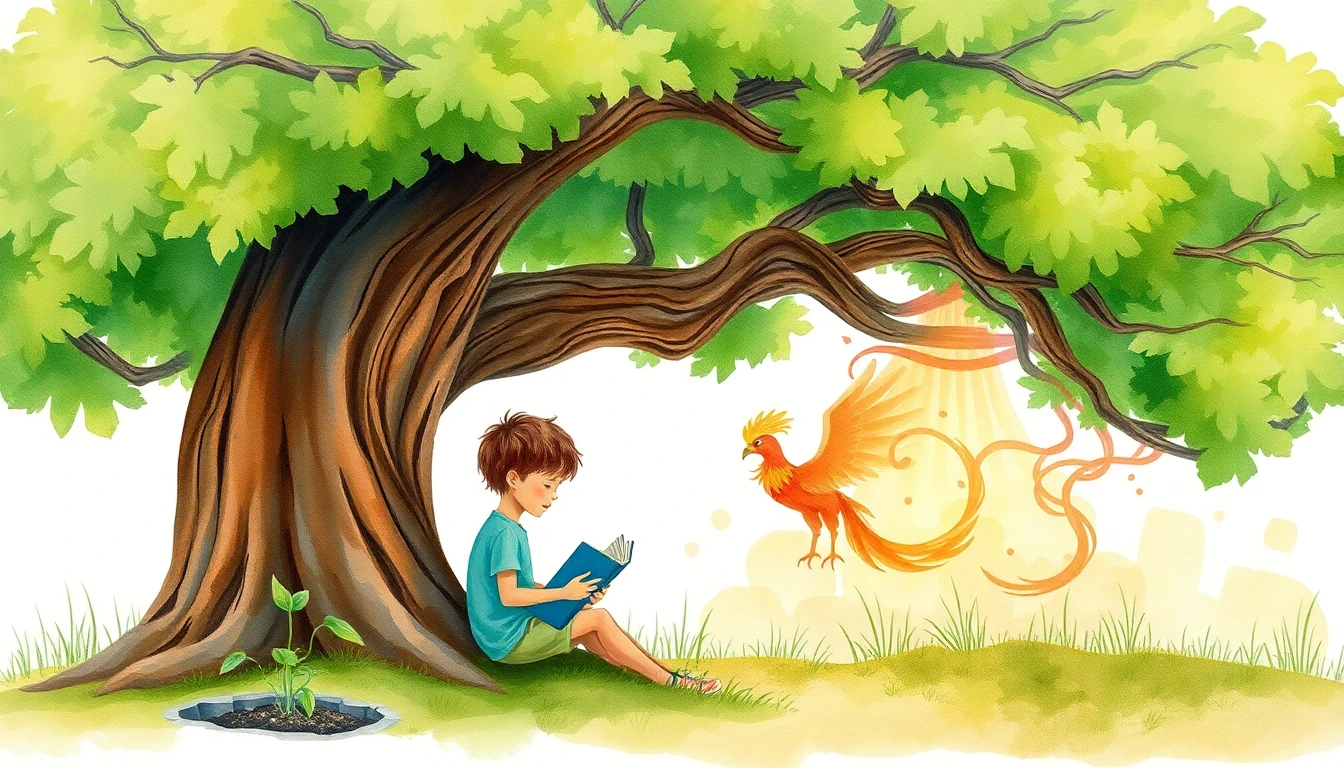
Imagine a child curled up with a book, eyes wide with wonder, as they follow a character who faces tough times but never gives up. That’s the magic of storytelling and it’s one of the most powerful ways to teach resilience to our kids. In today’s world, where challenges can pop up at any moment, helping children build resilience is one of the greatest gifts we can give them.
As parents, teachers, or anyone who cares about children, we all want to see them grow into confident, capable, and compassionate people. But how do we actually help them bounce back from setbacks, handle big feelings, and keep going when things get tough? The answer, often, is found in stories.
Stories are more than just entertainment. They’re safe spaces where kids can explore challenges, learn how to cope, and see that even heroes stumble sometimes. In this article, we’ll dive into how storytelling can nurture resilience, share story ideas, and offer practical activities you can use at home or in the classroom. Let’s discover together how the right stories can help kids not just survive, but truly thrive.
What is Resilience? Understanding the Core Concept

Resilience isn’t about never facing problems. It’s about what we do when life gets hard. Think of a plant bending in the wind but not breaking, or a rubber band stretching and snapping back. In real life, it’s the student who fails a test but studies harder next time, the athlete who loses a game but keeps practicing, or the child who makes a mistake but learns and tries again.
The best part? Resilience isn’t something you’re born with or without. It’s a skill one that can be learned, practiced, and strengthened over time. Here’s what helps kids (and adults!) become more resilient:
- Supportive relationships: Having people who care about you makes tough times easier to handle.
- Positive outlook: Looking for the good, even when things are hard, helps keep hope alive.
- Accepting change: Life is always changing. Learning to adapt makes us stronger.
- Taking action: Trying to solve problems, instead of feeling helpless, builds confidence.
- Self-care: Taking care of our bodies and minds helps us handle stress better.
When we share stories that show these qualities, we give kids real-life tools for facing their own challenges.
Why is Resilience Important for Children?

Let’s be honest: childhood isn’t always easy. Kids today deal with school stress, friendship drama, family changes, and sometimes even big world events that can feel scary. Resilience is what helps them get through it all not by avoiding problems, but by learning, growing, and coming out stronger.
- Better mental health: Resilient kids are better at handling stress, worry, and sadness. They bounce back faster and feel better about themselves.
- Improved school performance: When kids don’t give up after setbacks, they’re more likely to keep trying and do well in school.
- Stronger friendships: Resilient kids can handle conflicts and build healthier relationships.
- Greater happiness: Kids who are resilient tend to be more optimistic and satisfied with life.
- Future success: Resilience helps kids grow into adults who can achieve their goals and handle life’s ups and downs.
By helping kids build resilience, we’re giving them a toolkit for life. And stories are one of the best ways to fill that toolkit.
Resilience Story Ideas: Inspiring Narratives for Young Minds

Looking for inspiration? Here are some story ideas that can help kids see resilience in action:
- The Little Seed That Wouldn't Give Up: A tiny seed faces harsh weather, poor soil, and hungry birds, but keeps trying to grow into a beautiful flower. This story shows that even the smallest among us can be strong and persistent.
- The Boy Who Befriended the Bully: Instead of fighting back, a boy tries to understand why his bully is mean and helps him become a friend. This teaches empathy and peaceful problem-solving.
- The Girl Who Lost Her Voice: A talented singer gets stage fright and can’t sing anymore. She finds new ways to express herself and slowly overcomes her fear. This story is about adapting to change and facing fears.
- The Team That Learned from Failure: A sports team loses game after game but learns to work together, analyze mistakes, and improve. This story is about teamwork and learning from setbacks.
- The Child Who Moved to a New Country: A child struggles with a new language, culture, and school but makes friends and learns to love their new home. This story is about adaptability and embracing differences.
The best stories are relatable, engaging, and empowering. Focus on the characters’ struggles, their coping skills, and the lessons they learn. Show the journey, not just the happy ending.
Crafting Your Resilience Story: Key Elements and Techniques

Want to create your own resilience story for your child or students? Here’s what makes a story truly stick:
- Relatable characters: Kids need to see themselves in the story. Create characters who face challenges similar to what real kids experience.
- Real conflicts: The problem should feel authentic something that truly tests the character’s strength.
- Clear stakes: Show what the character might lose if they give up, and what they could gain if they keep trying.
- Healthy coping strategies: Show characters asking for help, taking care of themselves, and solving problems in positive ways.
- Growth and change: The character should learn and become stronger by the end that’s the heart of resilience.
- Hope and empowerment: End with a message that inspires kids to believe in themselves.
Storytelling tips:
- Show, don’t tell: Instead of saying “She was brave,” show her taking a deep breath and stepping forward despite her fear.
- Use symbols: A plant growing through concrete or a butterfly emerging from a cocoon can represent resilience.
- Create emotion: Help readers feel what the character feels this builds empathy and connection.
- Build suspense: Keep readers wondering what will happen next.
The best resilience stories feel real, inspire hope, and give kids practical ideas for handling their own challenges.
Resilience Activities for Students: Bringing Stories to Life

Reading stories is just the beginning! Here are some activities to help kids practice resilience in real life:
- Character analysis: Have kids pick a character and discuss their strengths, challenges, and how they grew. What can we learn from them?
- Role-playing: Act out scenes from stories, trying different ways to handle tough situations.
- Creative writing: Let kids write their own resilience stories based on their experiences or imagination.
- Art projects: Draw or paint scenes that show resilience like a flower growing through a crack or a person climbing a mountain.
- Group discussions: Share experiences and learn from each other in a safe, supportive environment.
- Resilience journals: Keep a journal to reflect on challenges, how they handled them, and what they learned.
More resilience-building activities:
- Gratitude practice: List three things to be thankful for each day this builds optimism.
- Mindfulness exercises: Try deep breathing or meditation to manage stress.
- Goal-setting: Set small, achievable goals and celebrate progress.
- Positive self-talk: Replace “I can’t” with “I can’t yet” or “I’m learning.”
These activities help kids turn story lessons into real-life skills, building resilience in fun, engaging ways.
Inspiring Resilience Through Stories: A Path to Empowerment

Stories have the power to change lives. By sharing tales of resilience, we help children understand that challenges are part of life and that they have the strength to overcome them. Resilience isn’t about avoiding problems; it’s about learning, growing, and becoming stronger.
Through carefully chosen stories and engaging activities, we can help kids develop the confidence, skills, and mindset they need to thrive. Let’s keep sharing these powerful narratives, building a generation of resilient young people ready to face whatever comes their way with courage and hope.
Frequently Asked Questions About Resilience in Storytelling
What age group benefits most from resilience stories?
While resilience stories can benefit all ages, they are especially impactful for children and teens. Early exposure helps kids develop coping skills and a growth mindset that will serve them for life.
Can real-life stories be effective resilience tools?
Absolutely! Real-life stories of resilience carry emotional weight and authenticity. Biographies, autobiographies, and documentaries can show kids that overcoming adversity is possible in the real world.
What role does failure play in resilience stories?
Failure is a crucial part of resilience stories. It’s the catalyst for growth and learning. By showing characters who stumble and learn from setbacks, stories teach kids that failure is not the end, but a chance to grow.
How can parents use resilience stories at home?
Read resilience stories together, talk about the characters’ challenges, and relate the stories to your child’s own experiences. Encourage open conversations about setbacks and model resilience in your own behavior.
Are there cultural considerations when choosing resilience stories?
Yes! Choose stories that reflect diverse backgrounds and experiences so all children can see themselves represented. Diversity in storytelling promotes inclusivity and broadens understanding of resilience across cultures.
How do I know if a book will help teach my kid resilience?
Look for books where the main character faces a challenge, learns from mistakes, and grows stronger. The best books on resilience also show healthy ways to handle emotions and setbacks.
